English
It has been a long time (emphasis on a long time) since I shared with you something about my vegetable garden, or my garden, or ecological patio, or whatever you prefer to call it.
Those of you who have a plot of land like this, know that this requires time and patience, because the plants take time to grow, they have their cycle and you have to let all the times be fulfilled. Well, today a little of that cycle has been completed and I would like to take this opportunity to tell you a little about it. It is already harvest time!
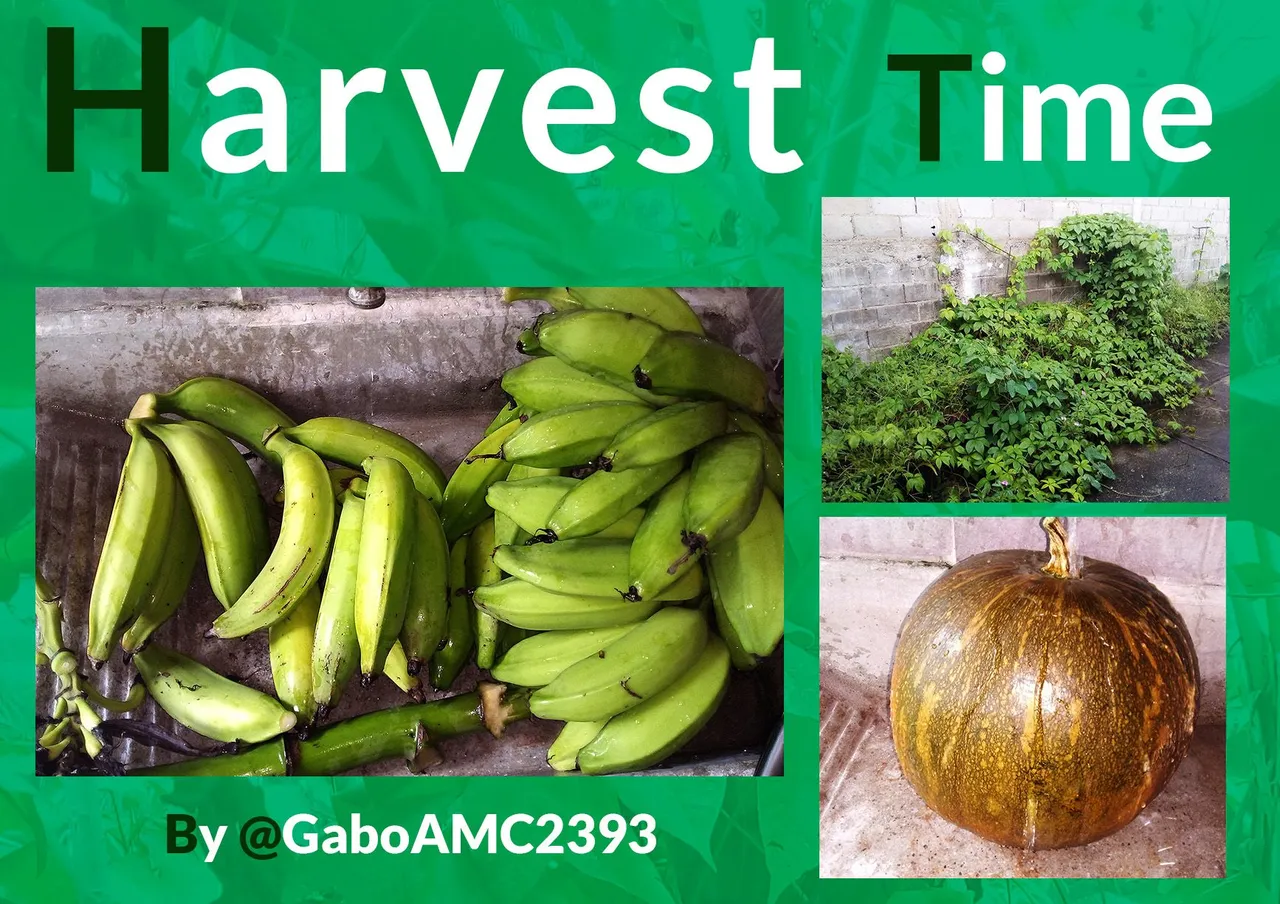
Well, first of all, I must clarify that I have this plantation in the backyard of my house. It is not a large piece of land or anything like it, it is simply my backyard and there I have planted a lot of little things, such as banana plants or cassava (manioc).
These plants have long cycles, annual cycles. What does this mean? That these plants are only planted once a year, since they take almost the whole year to give their product. Depending on the plant, from 9 to 12 months.
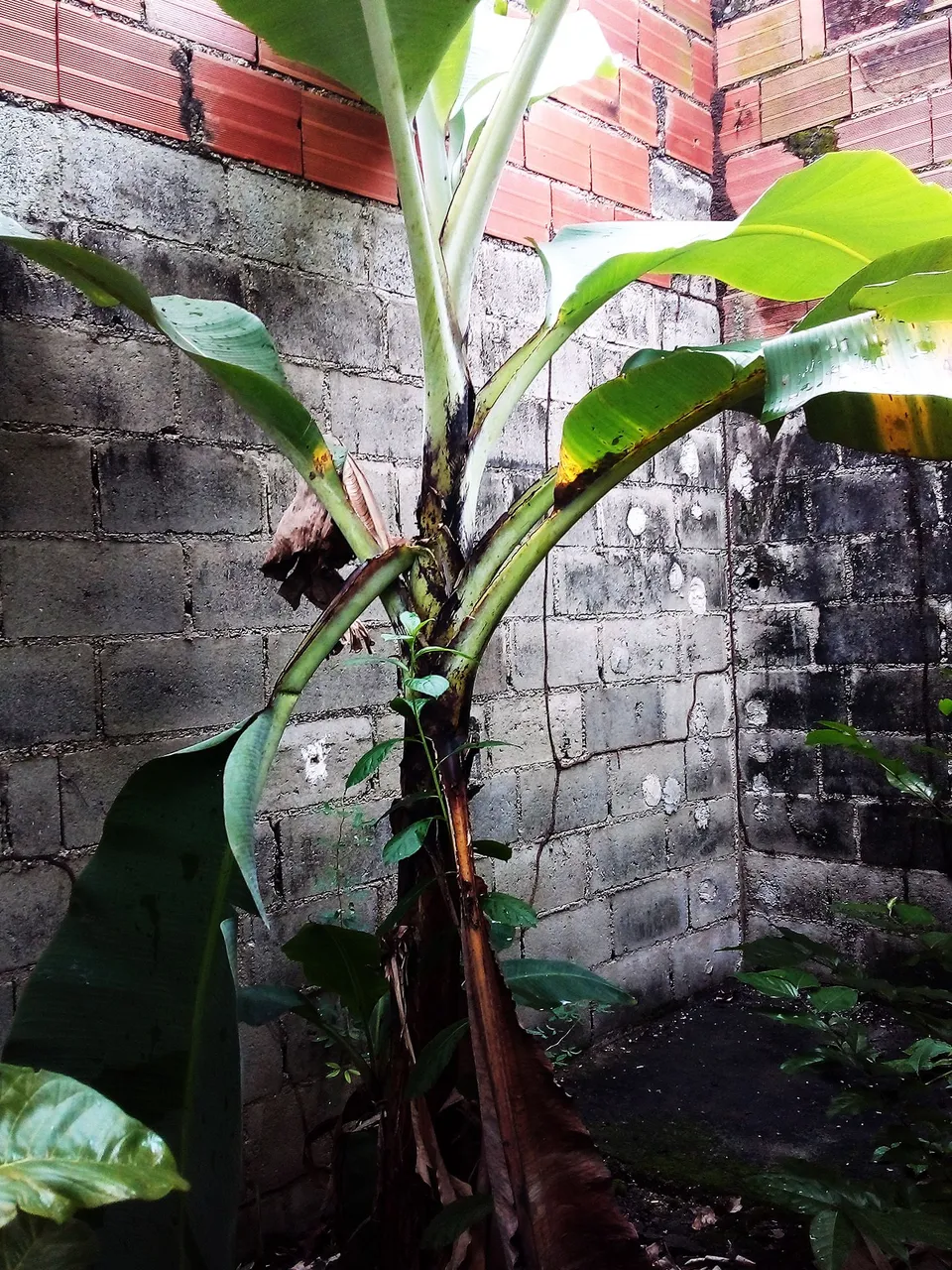
In my house I have three types of banana plants. One produces the big banana, which I have heard it called platano macho in other places. I also have plants of the common banana, which is consumed all over the world. Finally I have another species that is known here as "Locho, or Topocho", but in other places it is also called "platano cachaco".
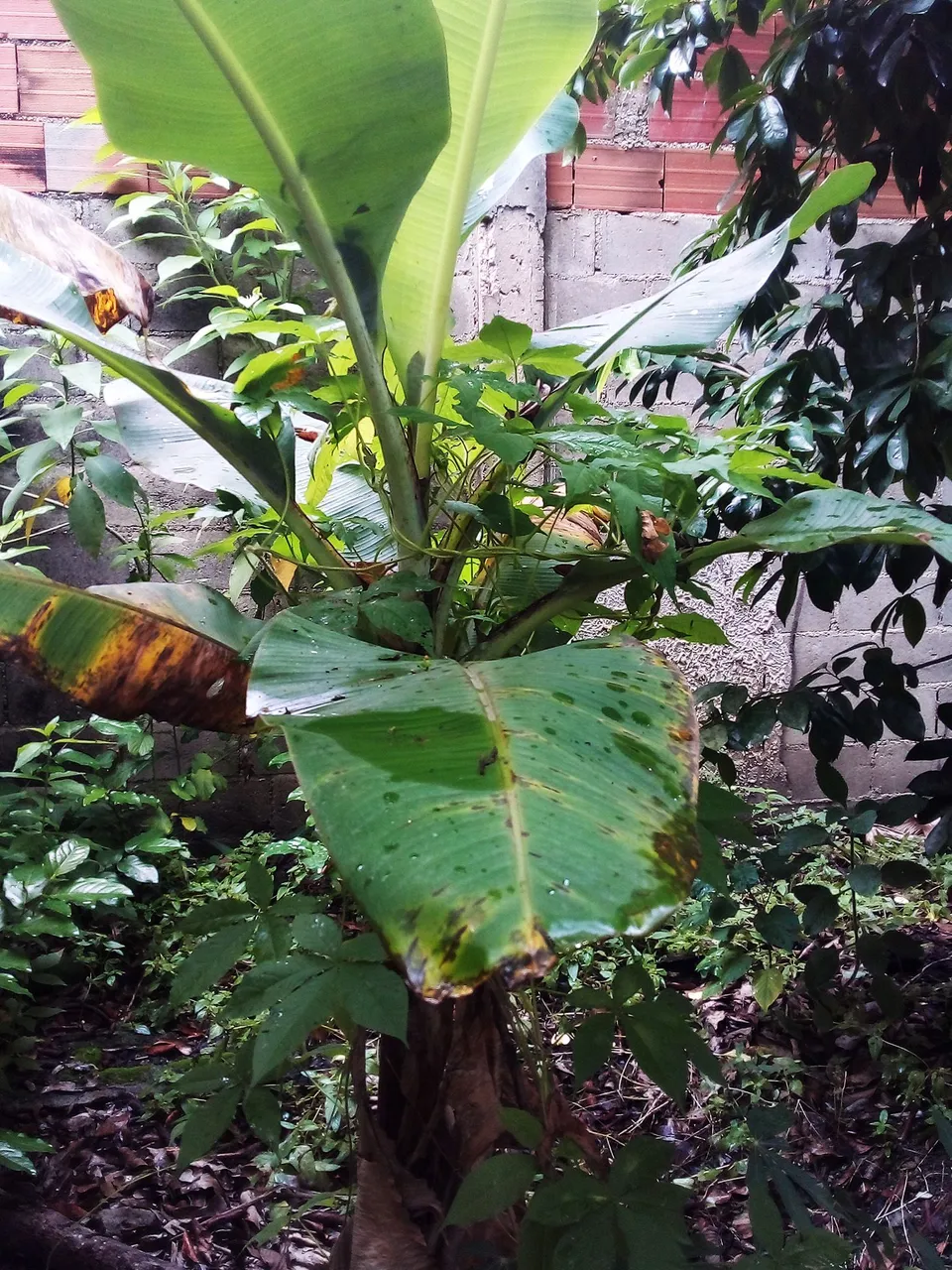 | 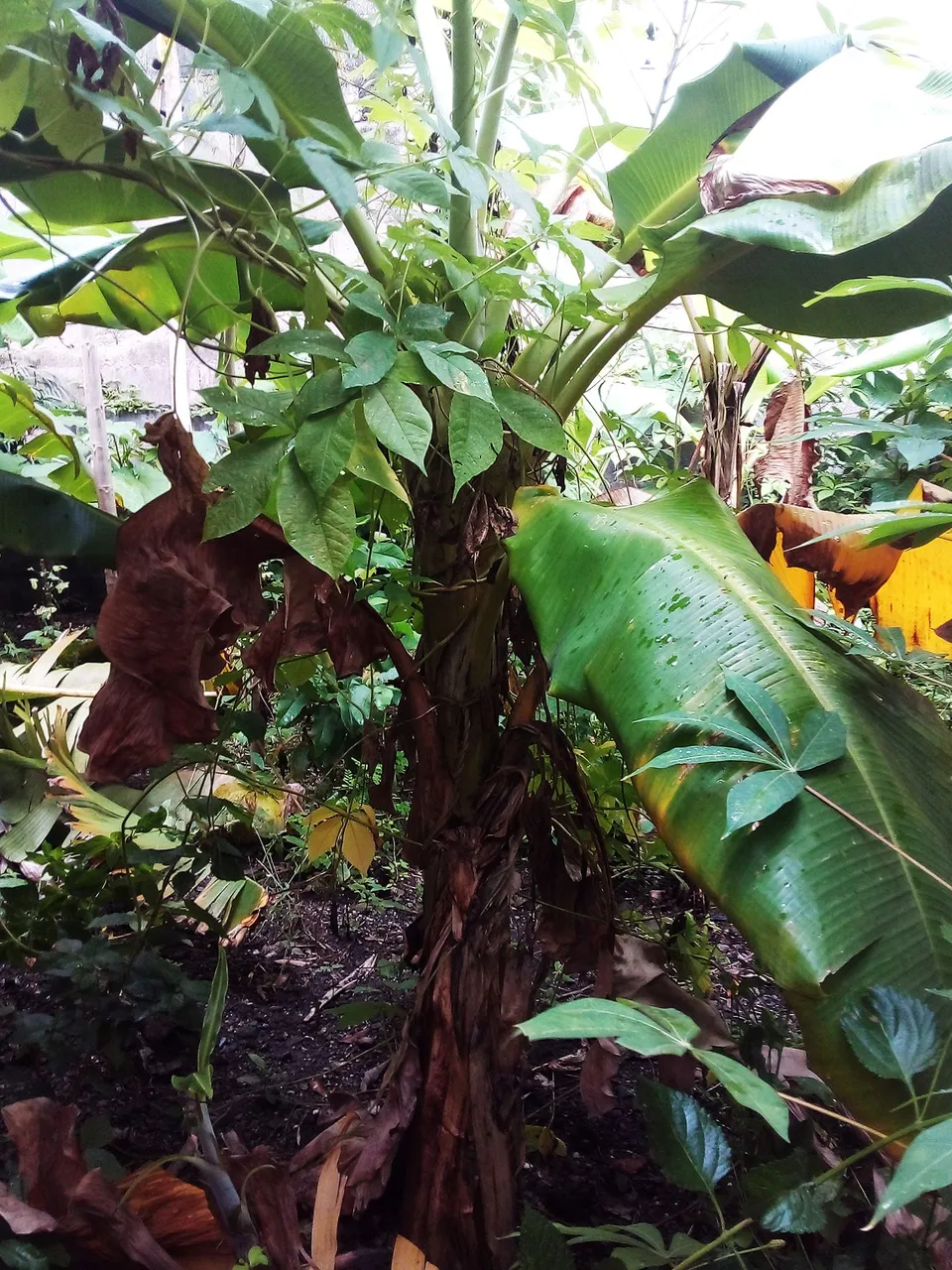 |
|---|
Precisely, today I managed to harvest two of these species, the "platano grande" or "macho" and the "topocho" or "platano cachaco".
Once these plants produce their fruit, they simply have to be cut. I did not manage to take pictures of them when they were on the plant but below you can see how the cut plant looks like after harvesting the fruit.
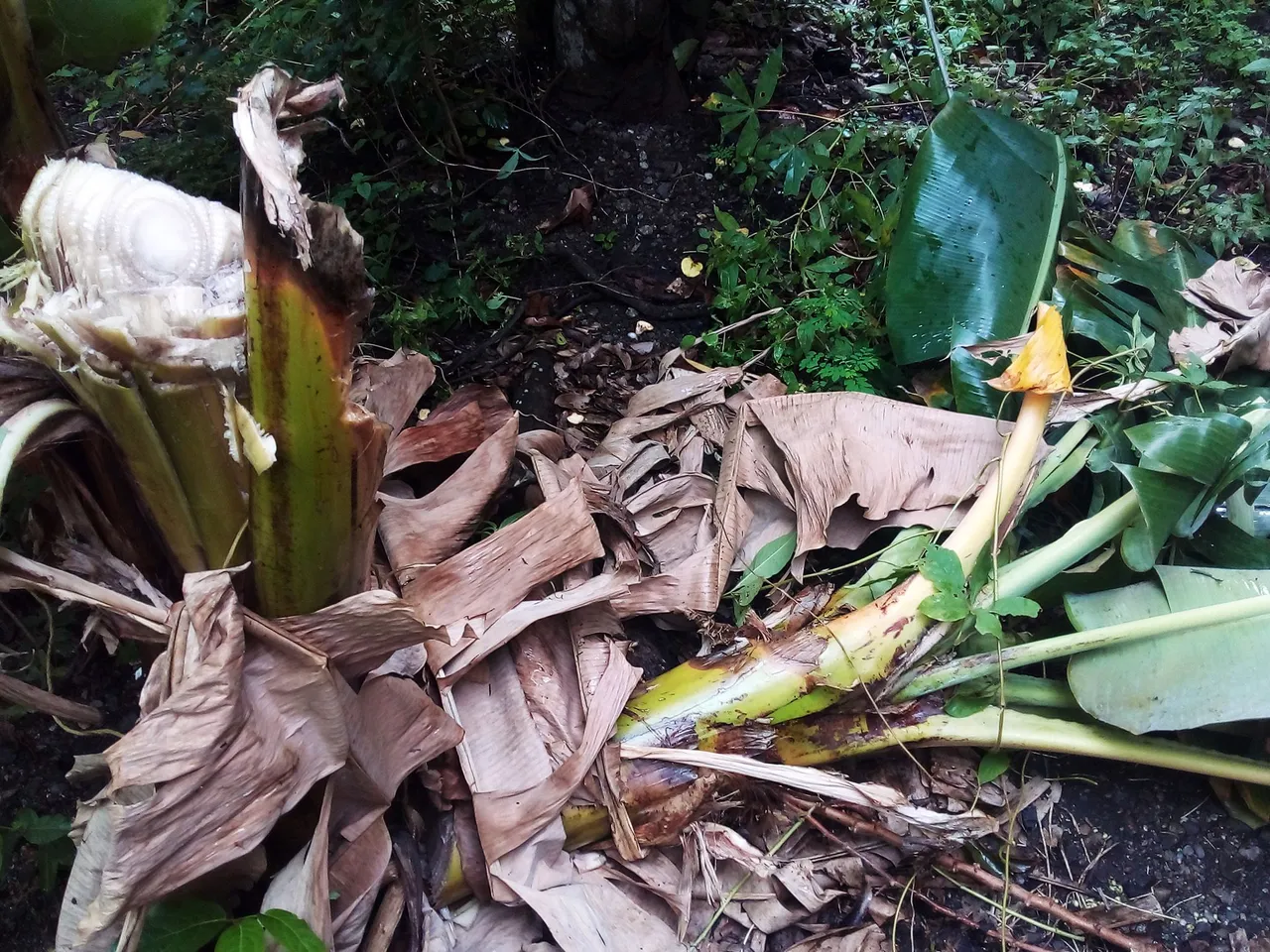 | 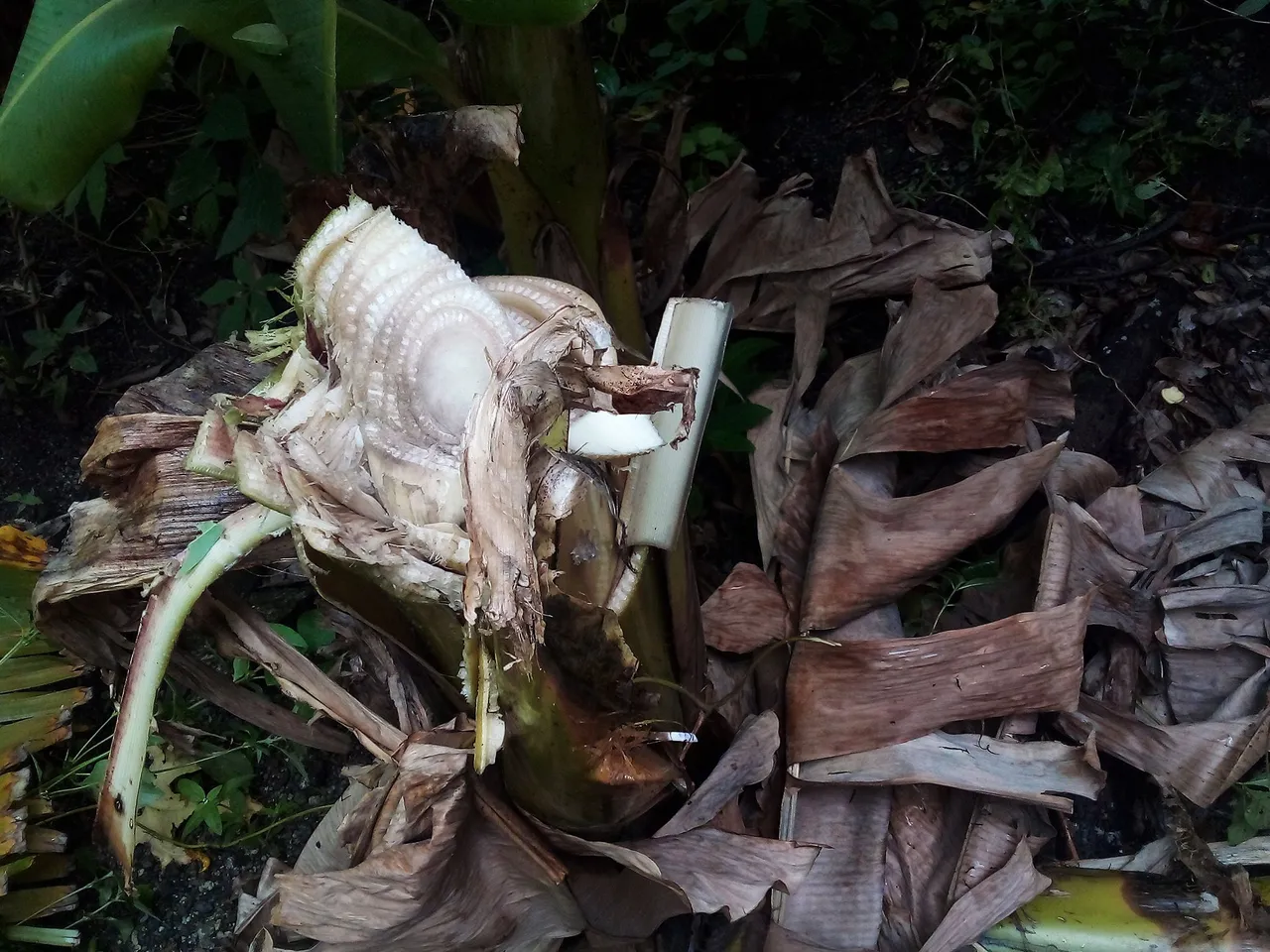 |
|---|
On the other hand, here is the bunch of topocho. To give you an idea of the size of this one, you can compare it with the length of the machete, so I think I managed to get a good bunch, considering that I don't use any kind of chemical fertilizer, everything is organic.
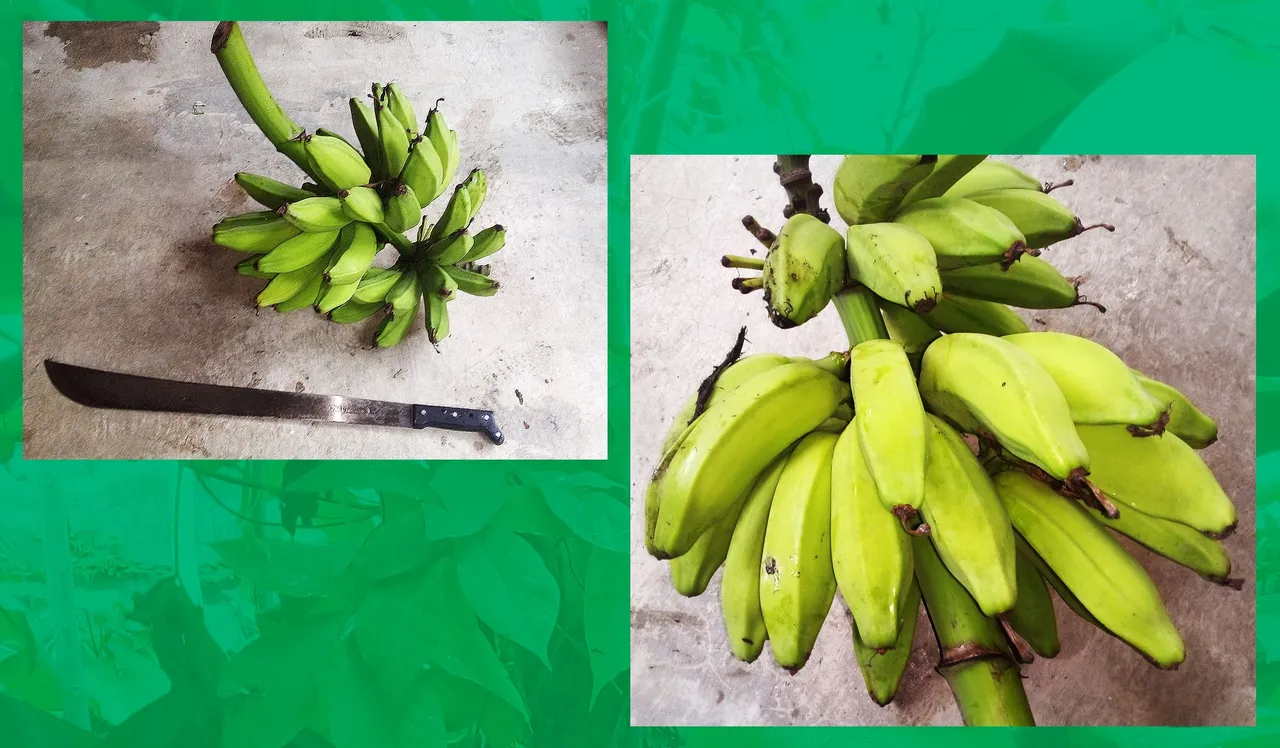
The one that did not produce many bananas was the male banana plant. It produced few bananas in the bunch, but the ones that were born turned out to be of a good size. A small bunch but large bananas.
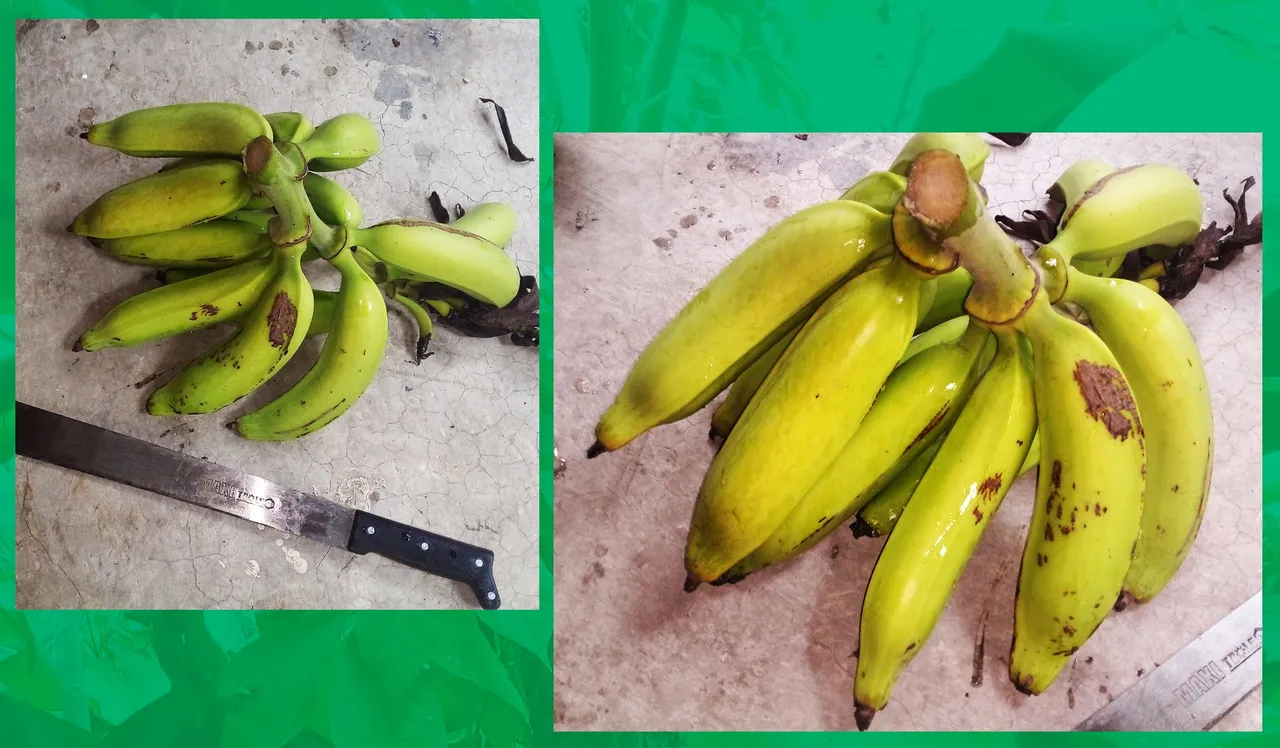
Well, what I did with the harvest was to wash them, because among the bananas there were many insects and, surprisingly, a bird's nest but without any eggs.
I had a scare when I found a spider, but nothing serious because it was small, not so dangerous. I should point out that I am arachnophobic, so I looked for my cat and she ate the spider. Matter solved.
Below you can see how the bananas looked like once I separated them from the stem that holds them.
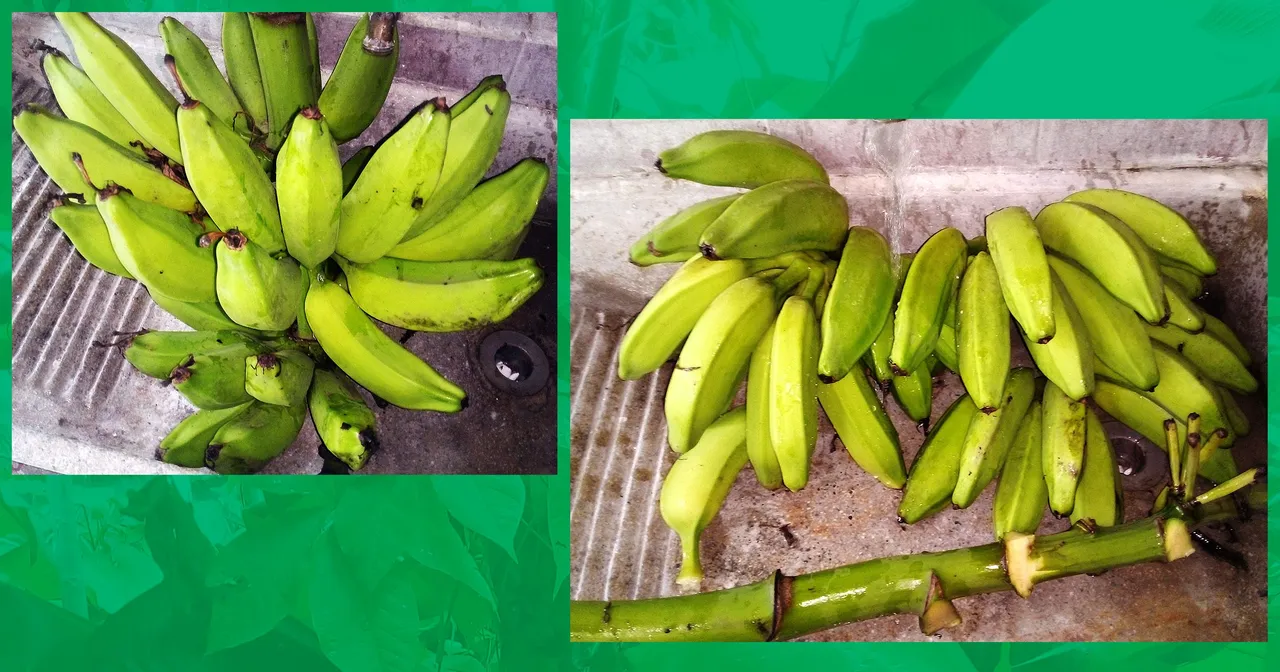
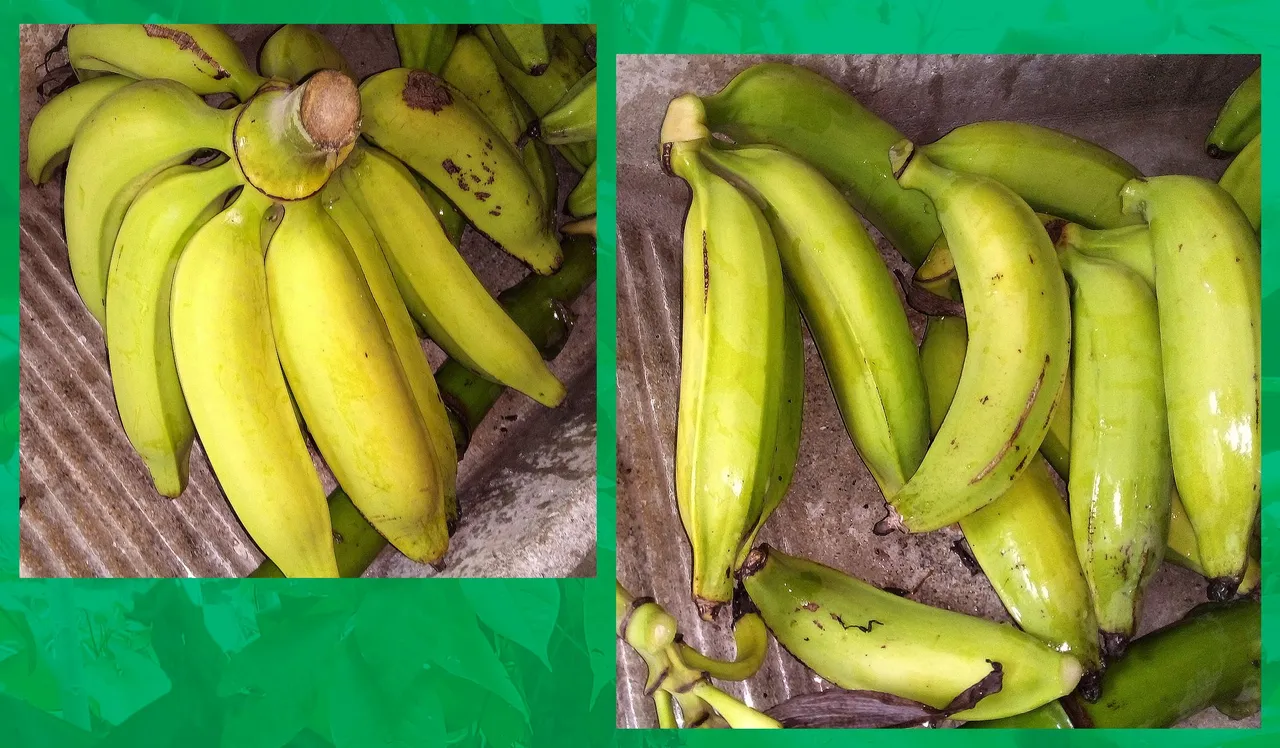
As you can see, it is a considerable harvest if we think that I live alone. For me it's something that will last quite a while and I'll have enough bananas to eat for a couple of months.
Although, if you think about it, they will probably ripen before I manage to eat them all. Because of the mountain climate where I live, these vegetables ripen a yellow color naturally, no chemicals need to be added to speed up the ripening process.
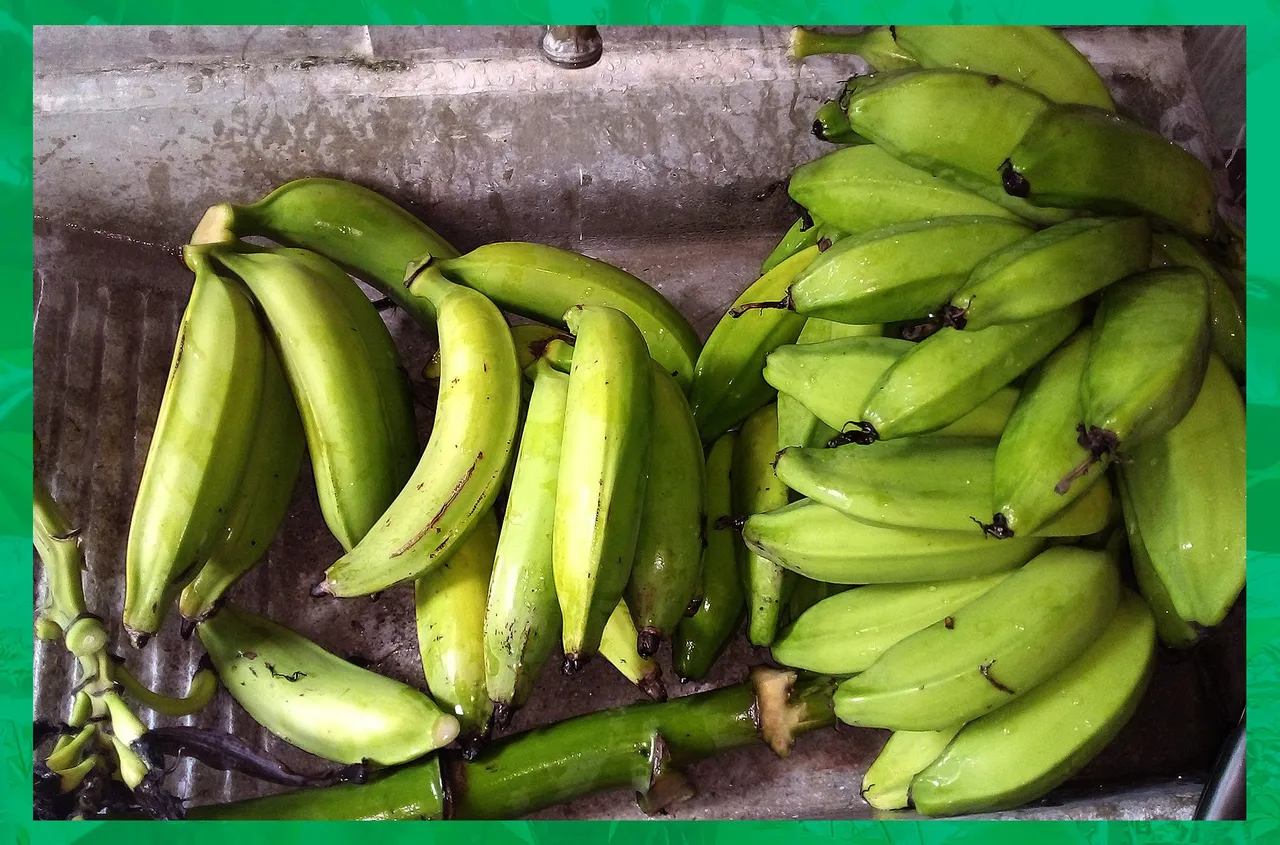
In addition to the banana, I also harvested a good sized auyama that grew from this vine. Just one, since it does not grow very well here in this area.
Like the bananas, I had to wash it very well because it was on the ground.
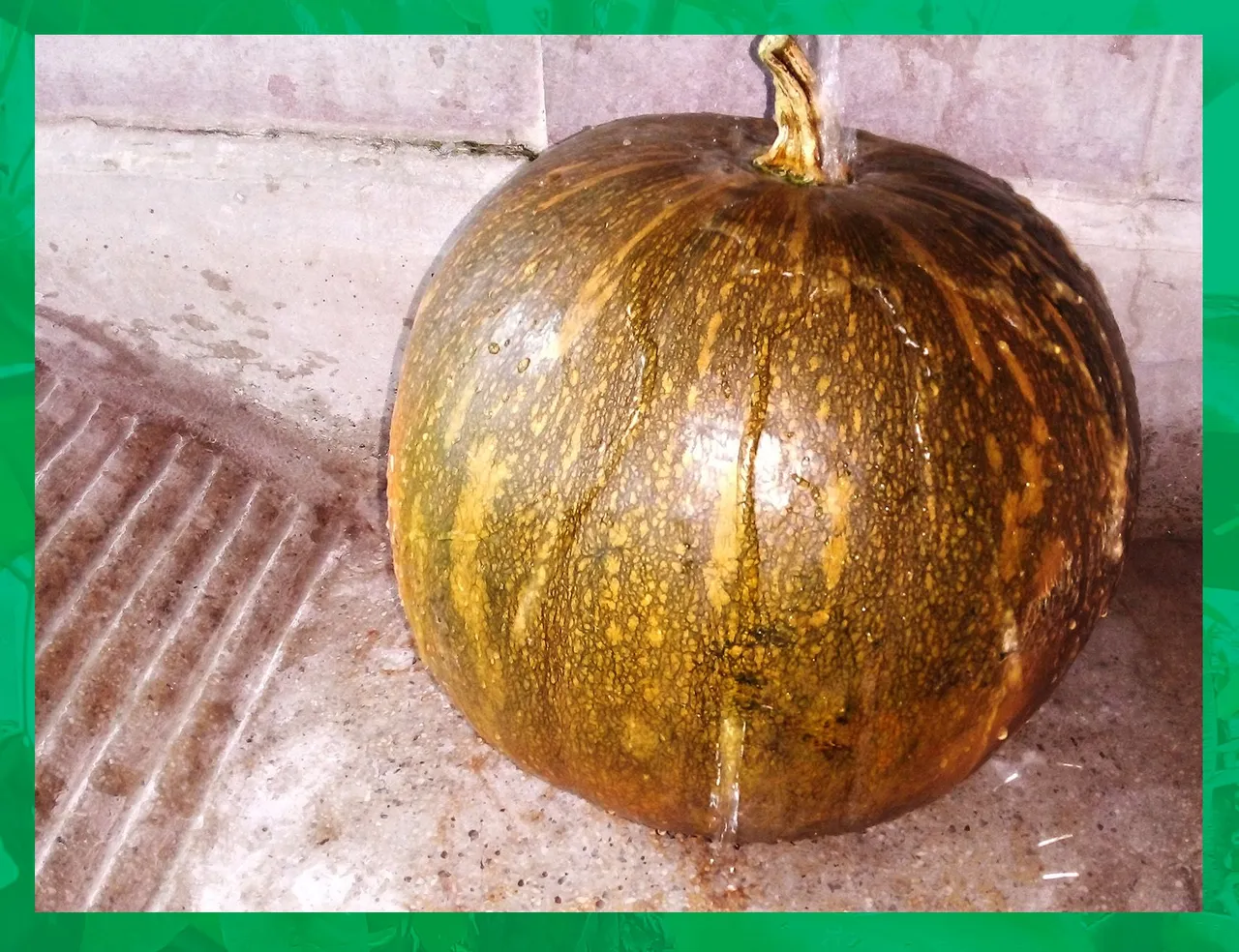
Once well washed, I kept them in the house for later consumption. I am happy that my work is finally paying off.
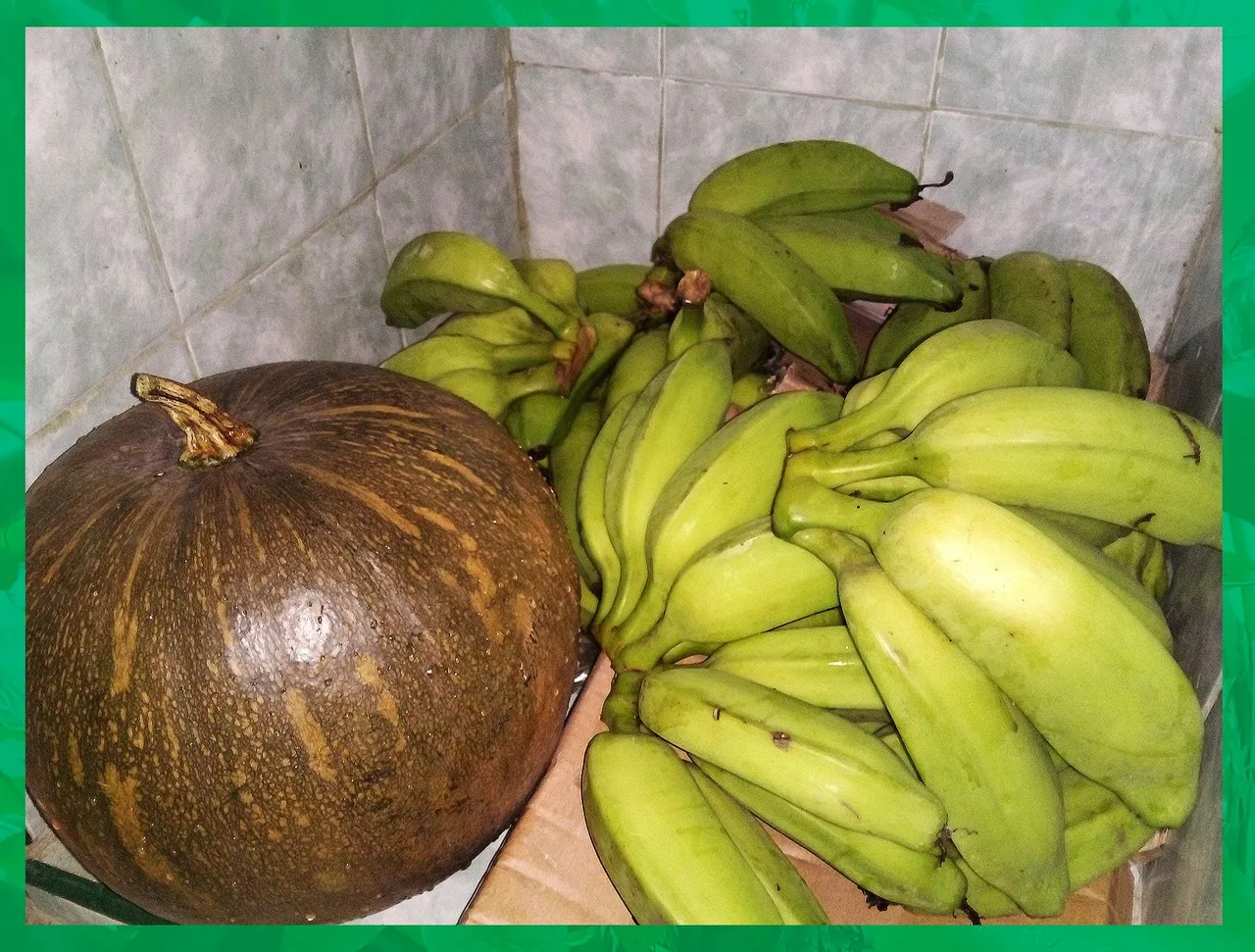
I take this opportunity to tell you that in one part of the planting beds that I have and in another part of the land I am leaving the soil to rest. This is a technique in which, after sowing, you simply do not sow anything else, you just leave the land to grow all the soil and to recover the organic matter.
In my case, I use this same organic matter to turn it into ashes and use it as fertilizer, or I simply let it decompose in the soil to provide organic matter to the soil, since I do not use chemical fertilizers. In the pictures below you can see how the underbrush have grown in the soil, underbrush that, as I said, I will use for the next planting cycle.
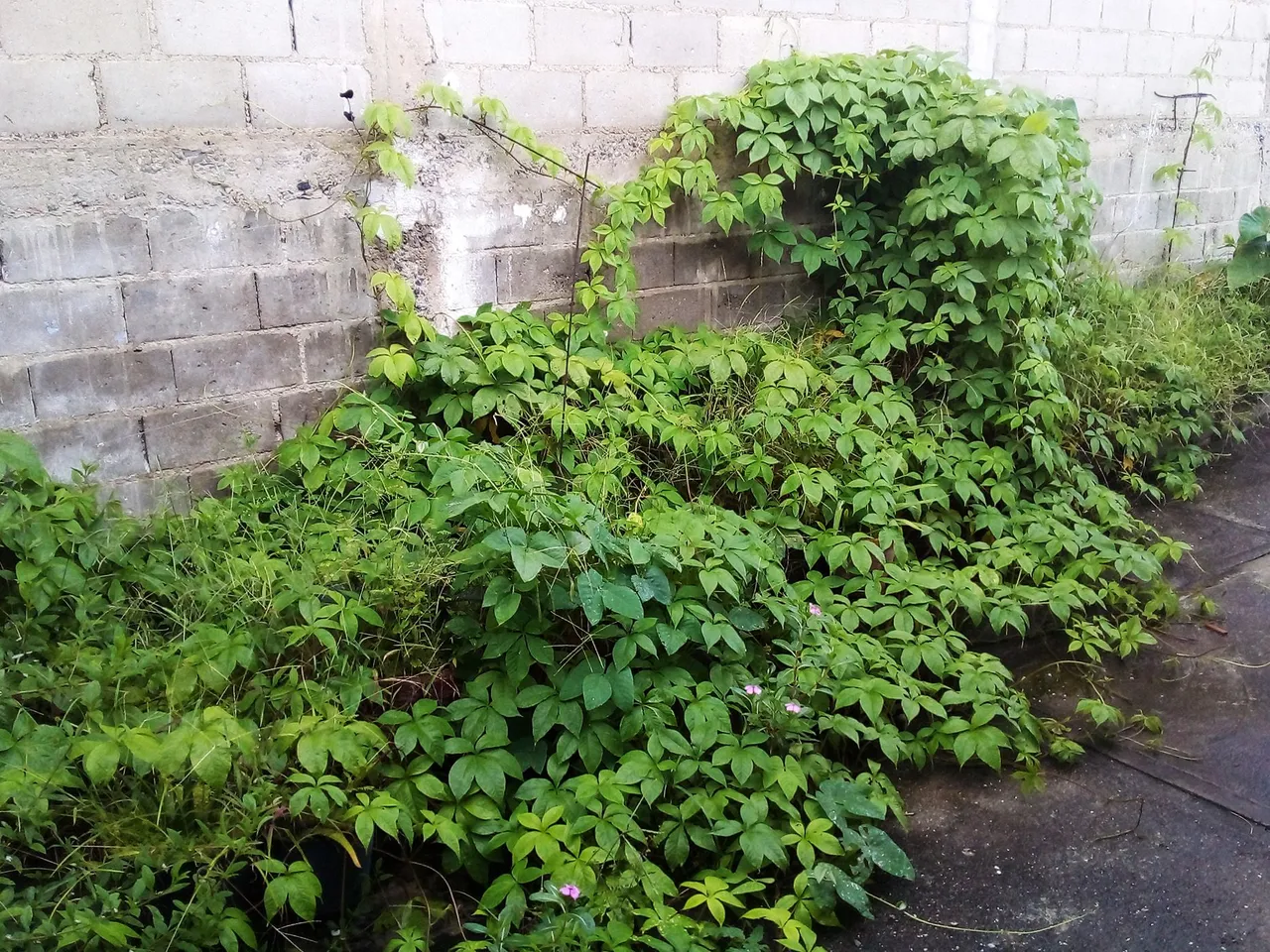
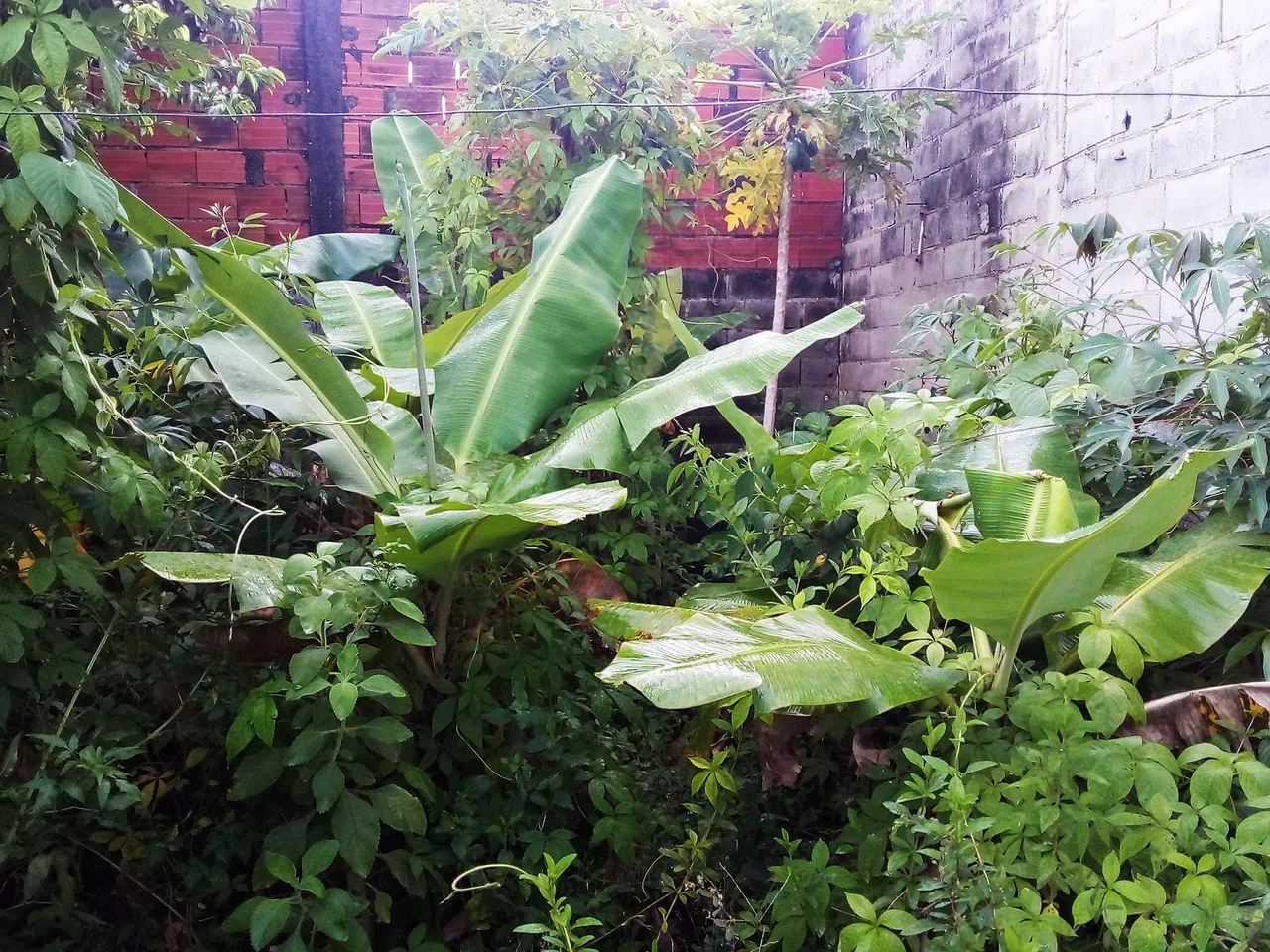
Well friends, that's all for now. I'm glad to have shared with you this brief update on my harvest from my little organic garden. I will share more tidbits later as I continue to produce more, because it is already harvest time.
I invite you to leave your opinions below in the comments, as always I will be happy to read them. With nothing more to add, I'll say goodbye then...
See you next time!
Español
Hace bastante tiempo, (énfasis en bastante tiempo) que no compartía con ustedes algo referente a mi huerto, o mi jardín, o patio ecológico, o como prefieran llamarle.
Los que tienen un terreno así, saben que esto requiere de tiempo y paciencia, pues las plantas tardan en crecer, tienen su ciclo y hay que dejar que todos los tiempos se cumplan. Pues bien, hoy se cumplió un poco de ese ciclo y me gustaría aprovechar para comentarles un poco al respecto. ¡Ya es tiempo de cosecha!
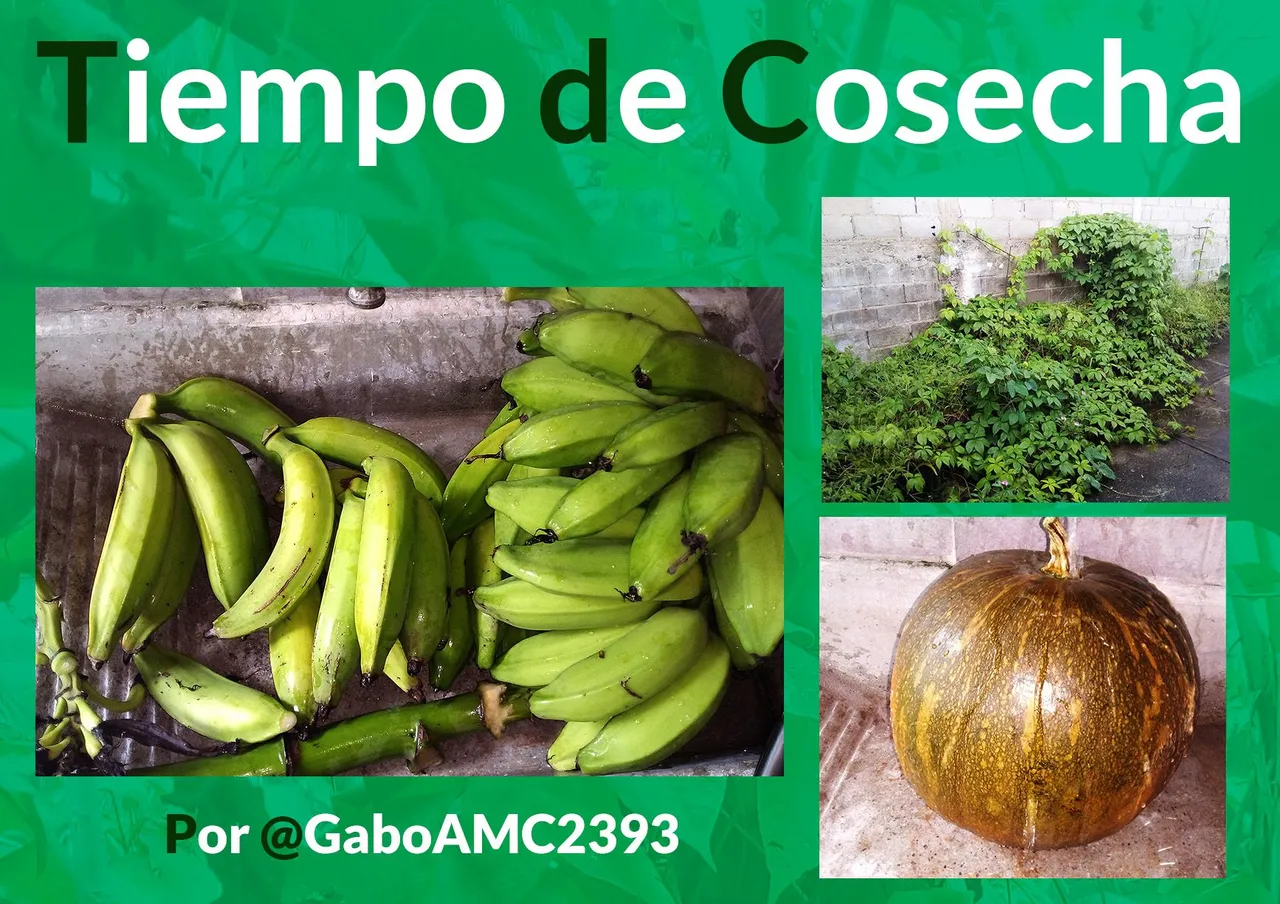
Bien, antes que nada, debo aclarar que este sembradío lo tengo en el patio trasero de mi casa. No es un terreno amplio ni nada que se le parezca, es simplemente es mi patio y allí tengo sembradas bastantes cosillas, como plantas de platano o yuca (mandioca).
Estas plantas son de ciclos largos, ciclos anuales. ¿Qué quiere decir esto? Que solo se siembran estas plantas una vez al año, ya que tardan casi todo el año en dar su producto. Dependiendo de la planta, de 9 a 12 meses.

En mi casa yo tengo tres tipos de plantas plataneras. Una produce el platano grande, que he escuchado que le llaman platano macho en otros lugares. También tengo plantas de banana común y corriente, de la que se consume en todo el mundo. Por último tengo otra especie que aquí se le conoce como "Locho, o Topocho", pero en otros lugares también se le llama platano cachaco.
 |  |
|---|
Precisamente, hoy logré cosechar dos de estas especies, el platano grande o macho y el topocho, o platano cachaco.
Estas plantas una vez que producen su fruto simplemente hay que cortarlas. No logré tomarle fotos cuando estaban en la planta pero a continuación pueden ver cómo queda la planta cortada, luego de cosechar el fruto.
 |  |
|---|
Por otra parte, aquí está el racimo de topocho. Para que se hagan una idea del tamaño de este, pueden compararlo con lo largo del machete, así que creo que logré obtener un buen racimo, considerando que no uso ningún tipo de fertilizante químico, todo es orgánico.

El que no produjo muchos platanos fue la planta de platano macho. Produjo pocos platanos en el racimo, pero los que nacieron resultaron ser de un buen tamaño. Un racimo pequeño pero de platanos grandes.

Bien, lo que hice con la cosecha fue lavarlos, pues entre los platanos tenían muchos insectos y, sorpresivamente, un nido de un pajarito pero sin ningún huevo.
Me llevé un susto al encontrar una araña, pero nada que grave porque era pequeña, no tan peligrosa. Debo destacar que soy aracnofóbico, así que busqué a mi gata y ella se comió a la araña. Asunto resuelto.
A continuación pueden ver cómo quedaron los platanos una vez que las separé del vástago que las sostiene.


Como pueden ver, es una cosecha considerable si pensamos que yo vivo solo. Para mi es algo que durará bastante y tendré platanos suficientes para comer un par de meses.
Aunque, si lo piensan bien, es probable que se maduren antes de que logre comerlos todos. Por el clima de montaña del lugar en el que vivo, estos vegetales se maduran de un color amarillo de manera natural, no es necesario agregar ningún químico para acelerar el proceso de maduración.

Además del platano, también coseché una auyama de buen tamaño que creció de esta enredadera. Una sola, pues no se da muy bien aquí en este terreno.
Al igual que los platanos, tuve que lavarla muy bien pues estaba en el suelo.

Ya bien lavadas, las guardé en la casa para consumirlas más adelante. Contento de que mi trabajo por fin esté dando frutos.

Aprovecho de comentarles que en una parte de las camas de siembra que tengo y en otra parte del patio estoy dejando descansar el terreno. Esta es una técnica en la que, después de sembrar, simplemente no se siembra nada más, solo se deja el terreno que crezca toda la tierra y recupere la materia orgánica.
En mi caso, yo uso esta misma materia orgánica para convertirla en cenizas y usarla como fertilizante, o simplemente la dejo descomponer entre la tierra para aportar la materia orgnánica al terreno, pues no uso fertilizantes químicos. En las fotografías de abajo pueden ver cómo ha crecido la maleza en el terreno, maleza que, como dije, aprovecharé para el próximo ciclo de siembra.


Bien amigos, esto ha sido todo por ahora. Me alegra haber compartido con ustedes esta breve actualización de mi cosecha, de mi pequeño huerto ecológico. Más adelante les compartiré más cosillas a medida que continúe produciendo más, porque ya es tiempo de cosecha.
Los invito a dejar sus opiniones abajo en los comentarios, como siempre estaré encantado de leerlos. Sin más que agregar, me despido entonces...
¡Hasta la próxima!
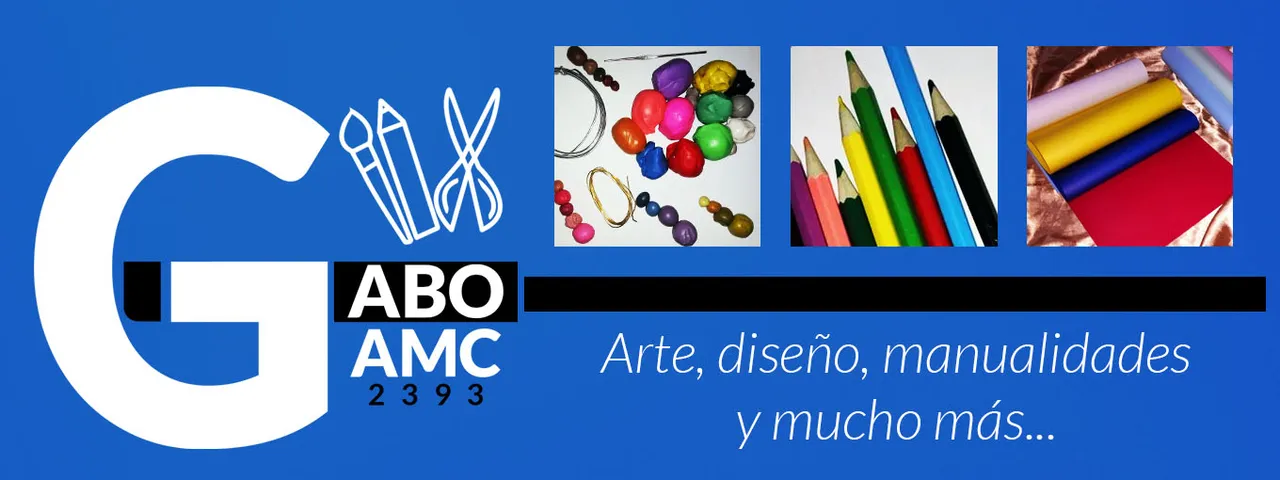
Traducido con DeepL
¿Debería disparar...?
Todo estará bien
Strider Hiryu Sculpture